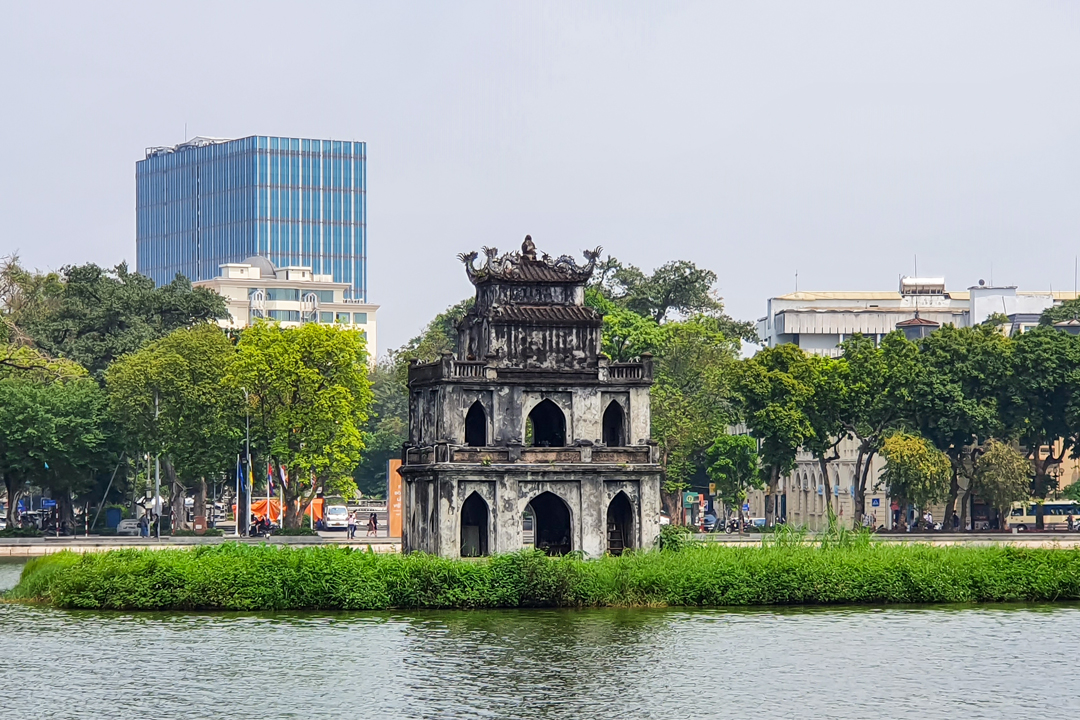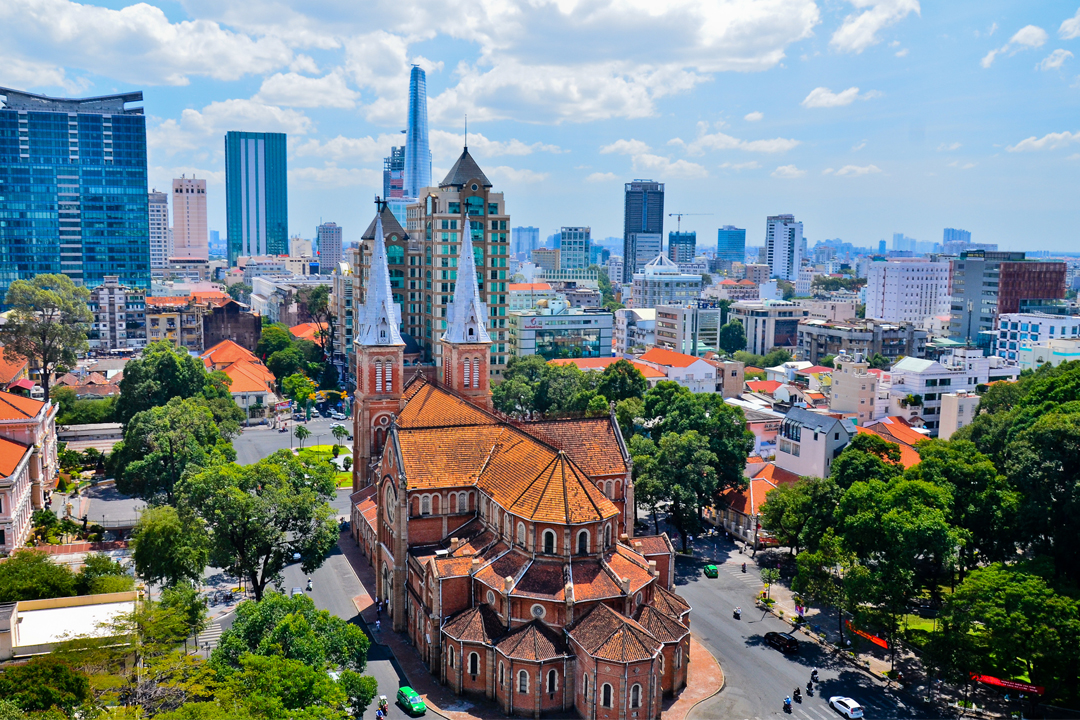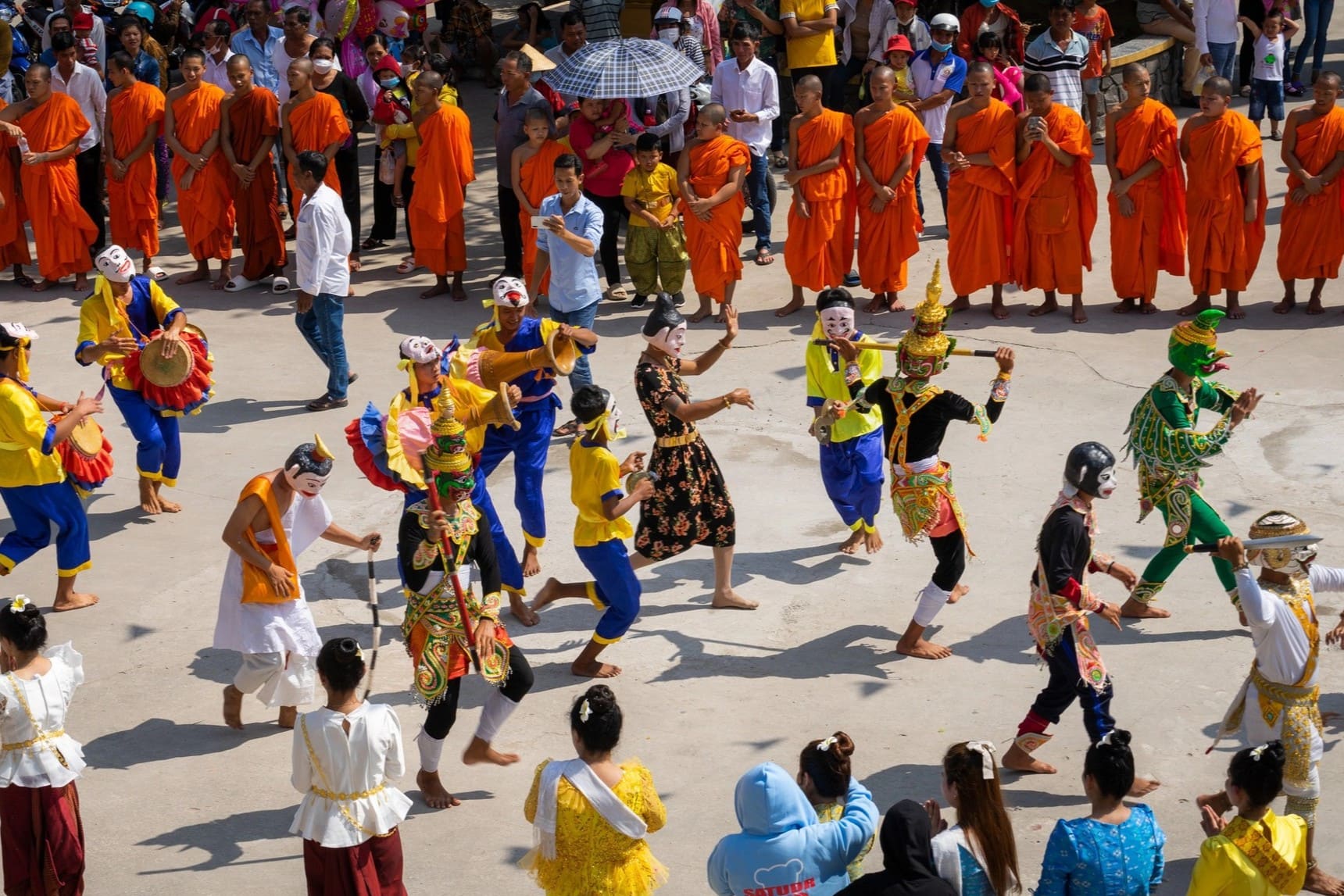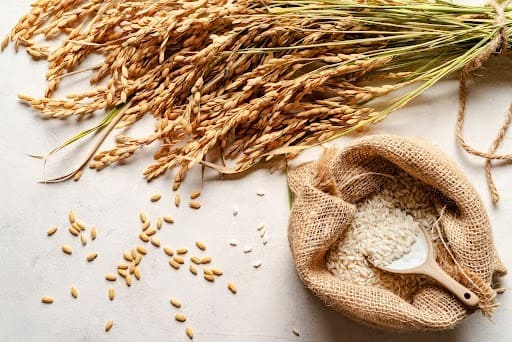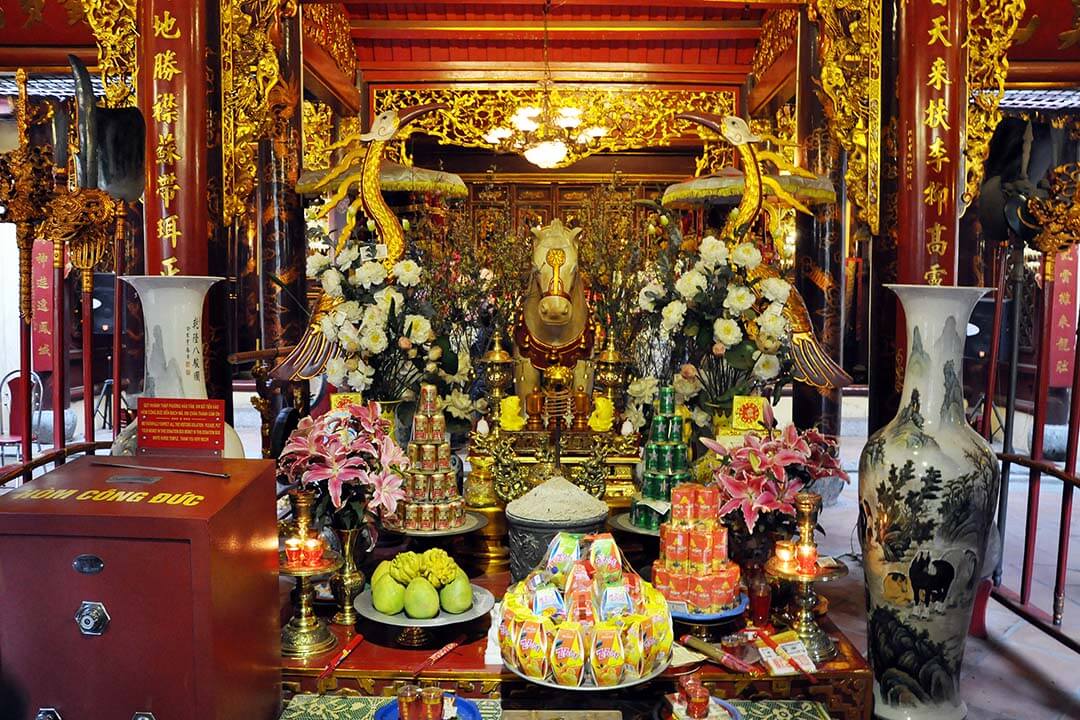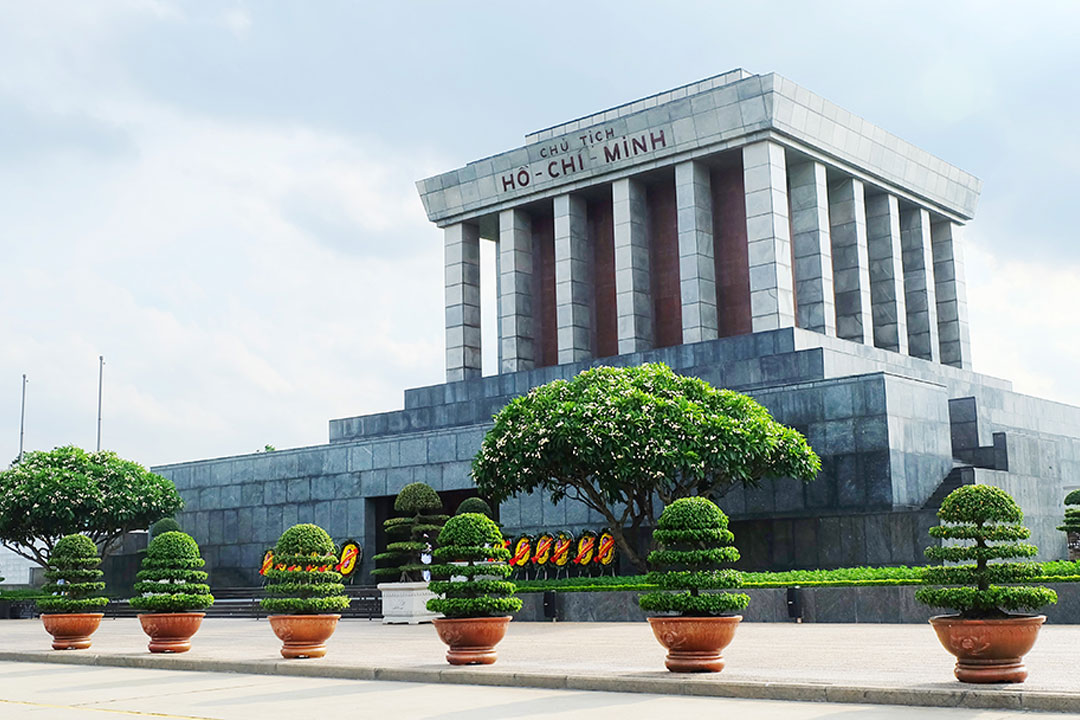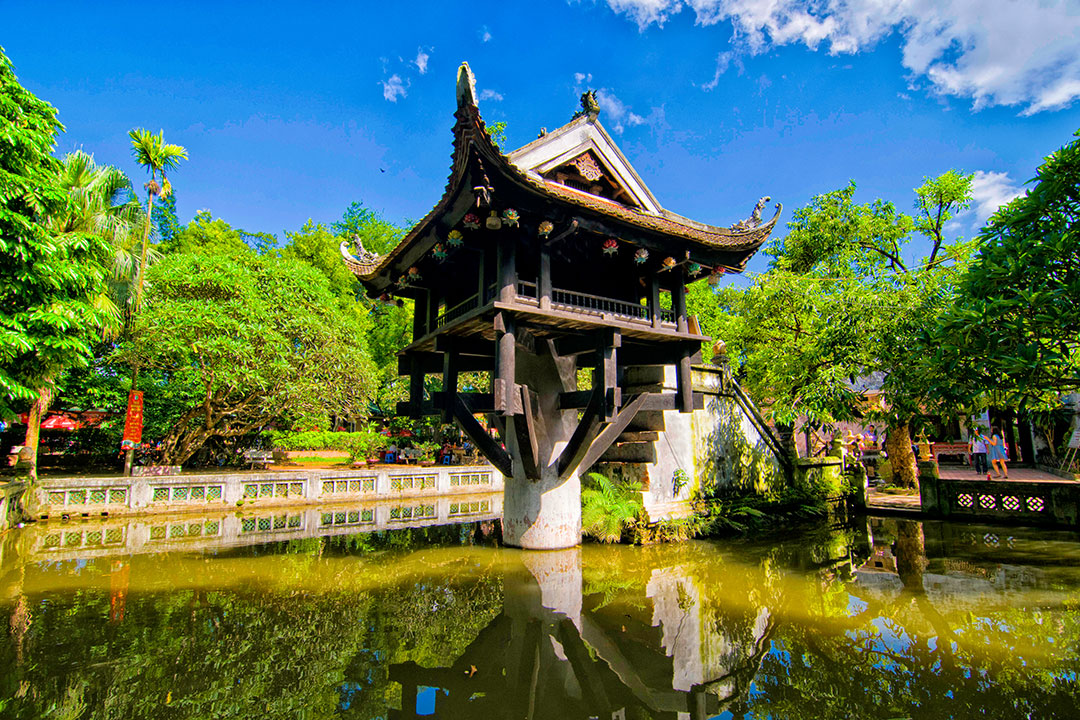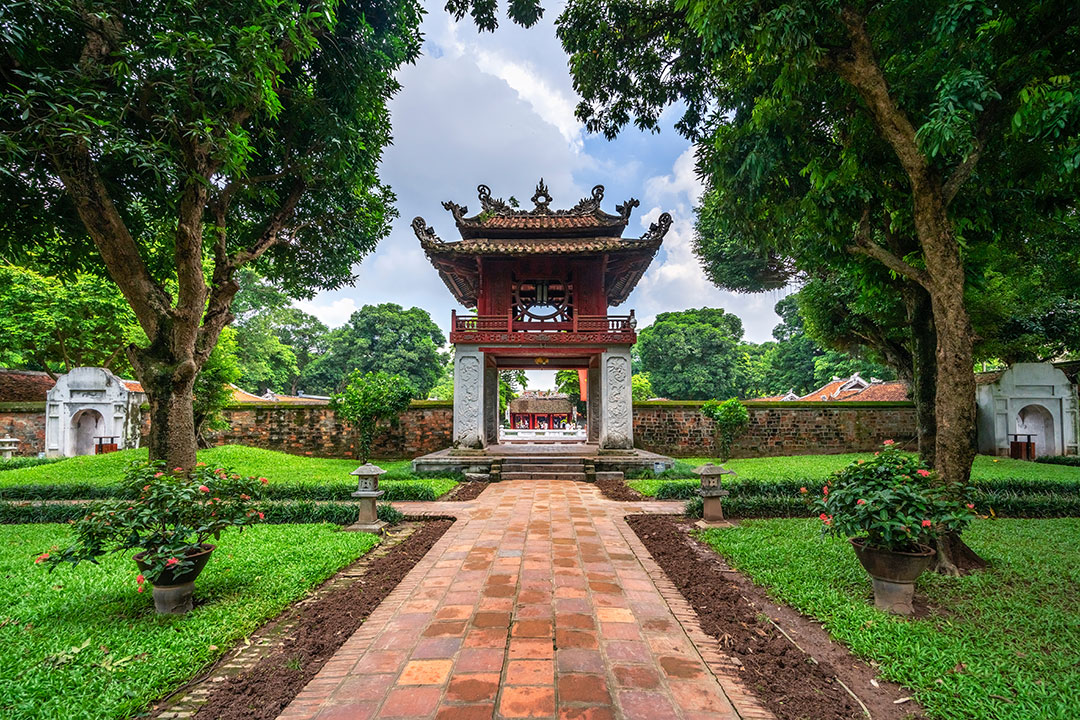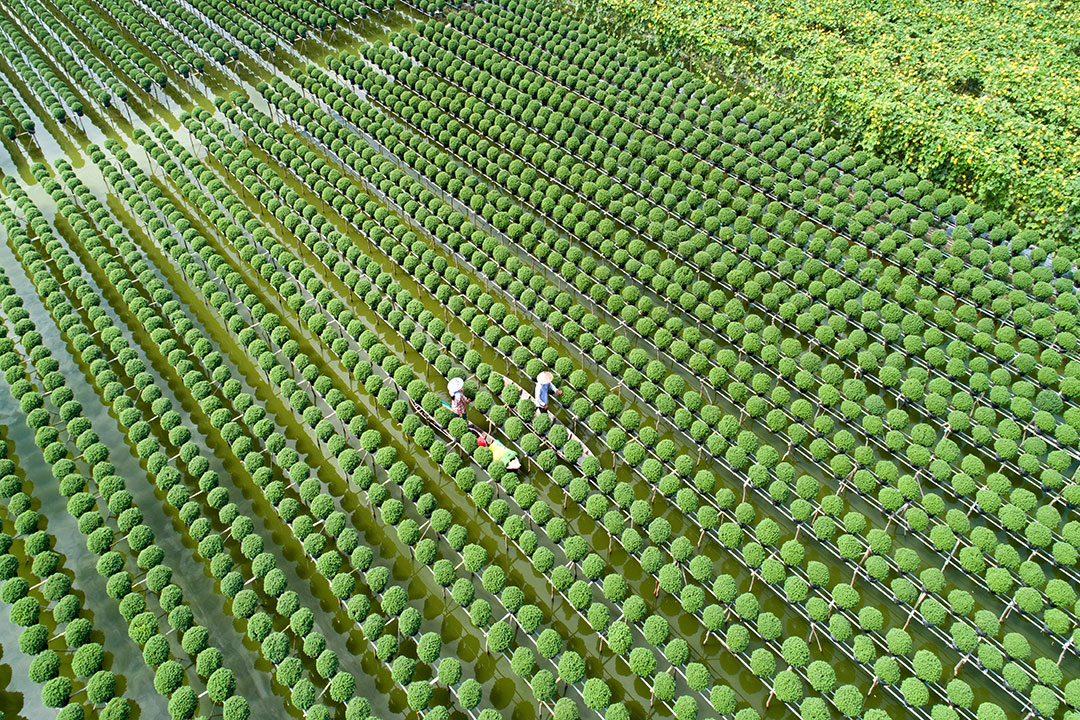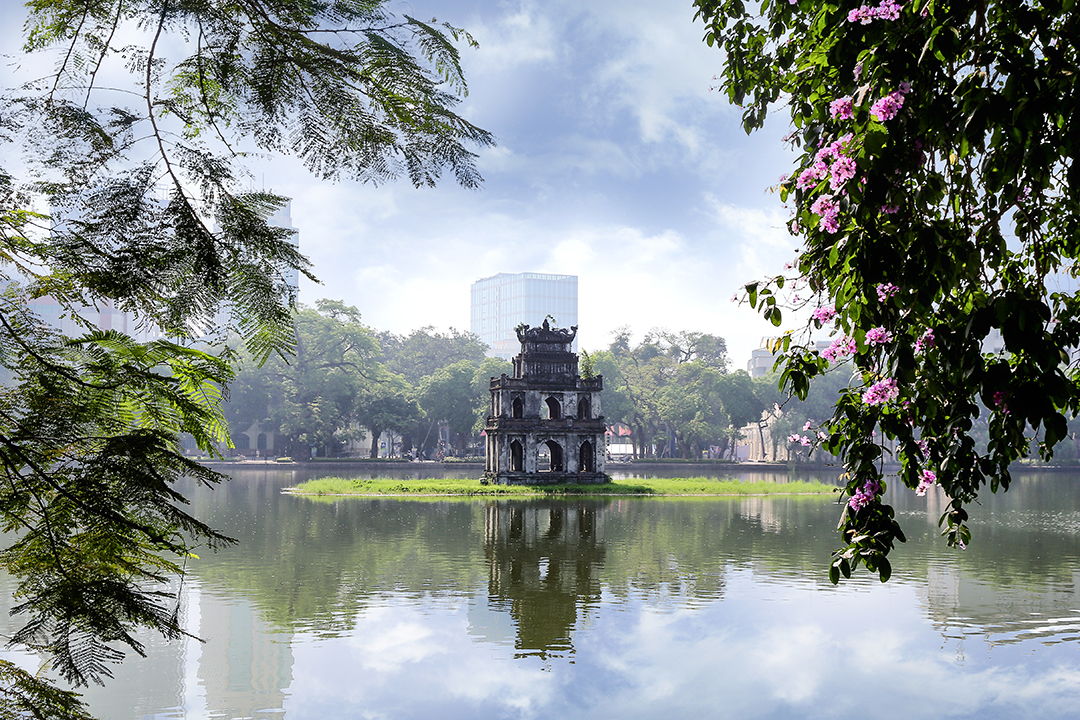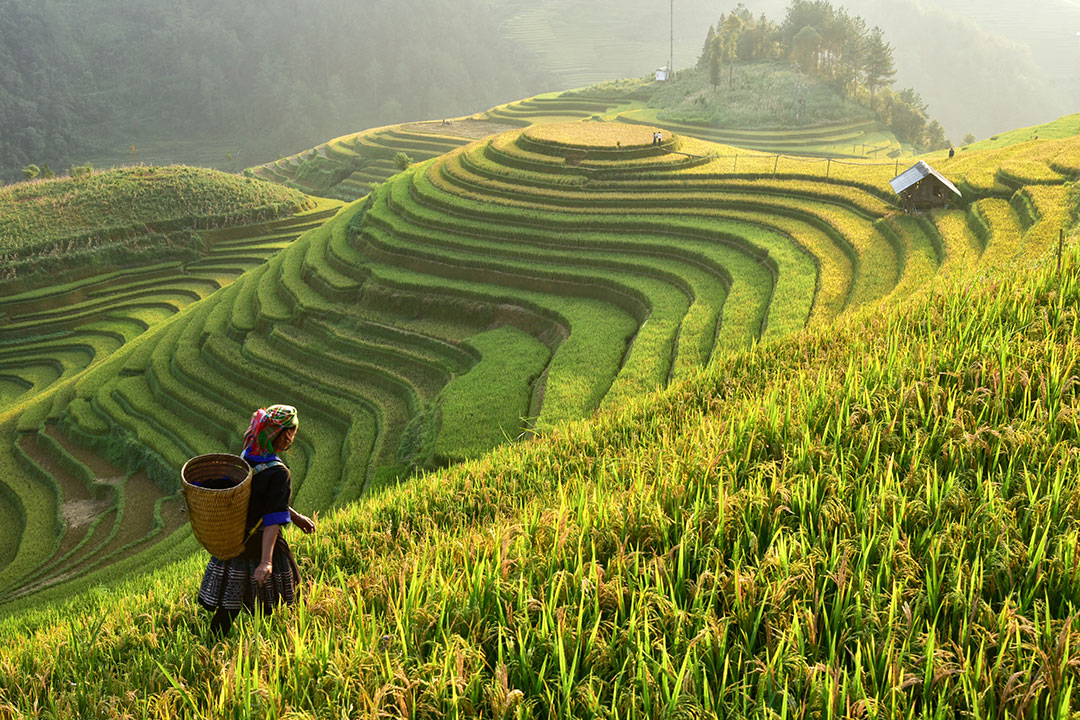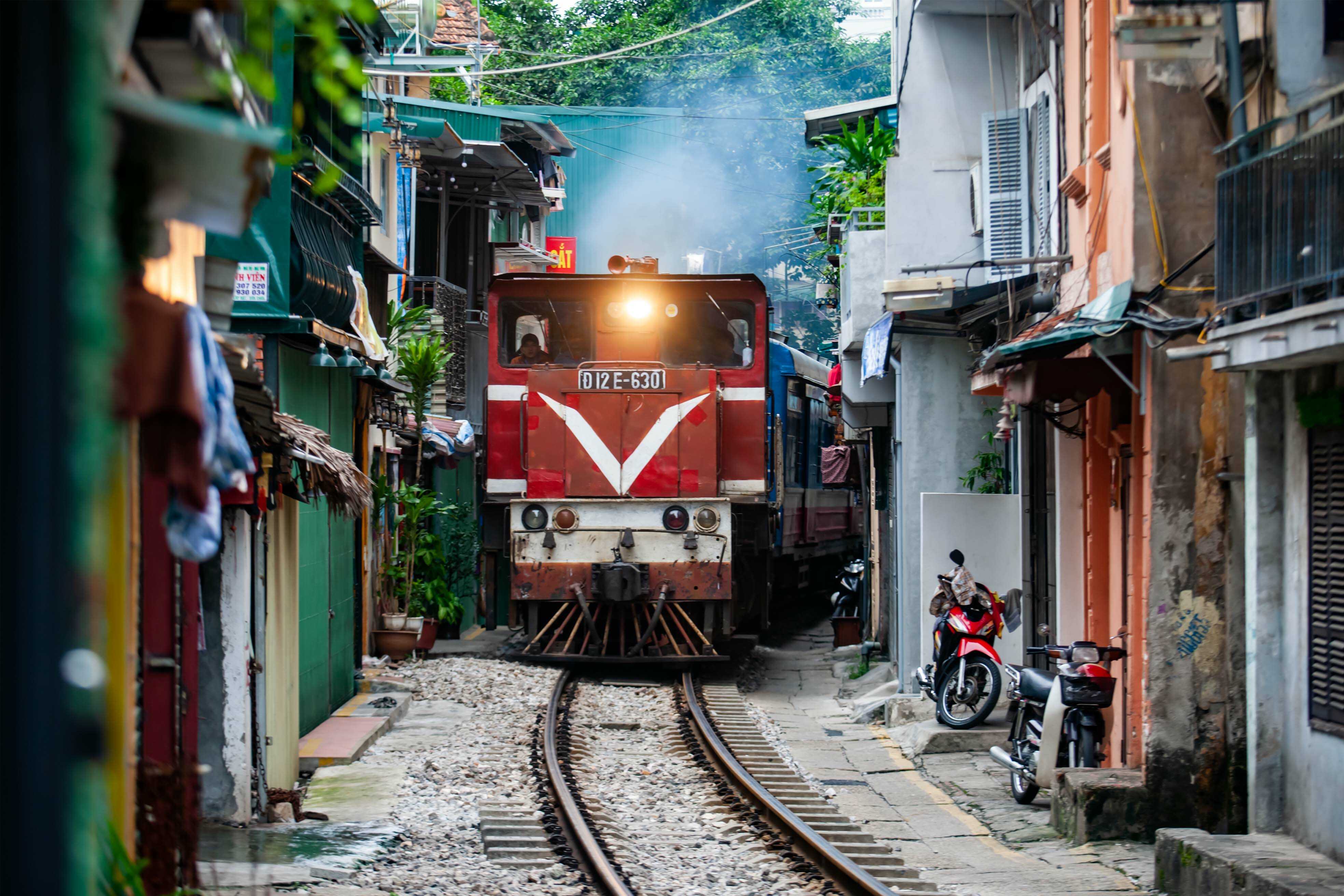Bach Ma Temple: History, Architecture, Things To Do & Travel Guide
Bach Ma Temple is one of Hanoi’s most revered spiritual landmarks, embodying centuries of tradition and cultural harmony. Nestled in the Old Quarter, this sacred site weaves together myth and history, serving as a symbol of Vietnamese identity through the ages. Travelers seeking authentic heritage will find intricate carvings and timeless legends within its hallowed halls. Every corner of this shrine reflects both devotion and folklore, offering a deep cultural experience. At GTrip, we reveal why Bach Ma Temple deserves a place on your Hanoi itinerary and what makes it unforgettable.
Overview of Bach Ma Temple
Bach Ma Temple stands as one of Hanoi's most significant historical and spiritual landmarks, holding a special place in the city's rich cultural tapestry. Known as the "Temple of the White Horse", this ancient shrine bears testament to Hanoi's fascinating origins and has witnessed centuries of Vietnamese history unfold. Located in Hanoi's Old Quarter, Bach Ma Temple blends striking architecture with spiritual depth, offering key insights into Vietnam's cultural heritage.
Where is Bach Ma Temple?
Address: 76 Hang Buom Street, Hoan Kiem Ward (formerly Hang Buom Ward, Hoan Kiem District), Hanoi
Bach Ma Temple is located in the heart of Hanoi’s Old Quarter, making it easily accessible for visitors exploring the city on foot. Surrounded by bustling streets, local shops, and cafes, the temple offers a peaceful retreat amid the lively urban atmosphere. Its proximity to other key attractions, such as Hoan Kiem Lake and ancient markets, makes it a convenient stop for anyone looking to experience Hanoi’s rich cultural and historical heritage.
Opening hours and entrance fee of the temple
- Opening hours: 8:00 AM - 11:00 AM & 2:00 PM - 8:00 PM daily
- Entrance fee: Free admission for all visitors
Bach Ma Temple's modest size belies its historical significance. The temple complex consists of several interconnected chambers and courtyards, with the main sanctuary housing the principal altar. Bach Ma Temple offers an intimate look at traditional worship in a timeless setting unlike larger complexes
Best times to visit Bach Ma Temple
Choosing the right time to visit Bach Ma Temple greatly enhances your experience. Early mornings (6:00-8:30 AM) offer a serene atmosphere with soft light ideal for reflection and photography, while late afternoons (after 4:00 PM) bring calmness and golden hour views before the temple closes at 6:00 PM. Midday visits (10:00 AM-2:00 PM) can be crowded, limiting the chance to enjoy its intimate details.
Culturally, the temple is most vibrant during the Bach Ma Temple Festival on the 12th-13th of the second lunar month (around March), featuring rituals, music, and processions. The 1st and 15th of each lunar month also draw many worshippers, offering a glimpse into authentic local practices. For photographers, mornings and late afternoons remain the best times to capture the temple’s unique beauty within Hanoi’s Old Quarter.
Whom does Bach Ma Temple honor?
Bach Ma Temple honors Long Do, a local deity believed to have safeguarded the ancient Dai La Citadel from dark forces. Over time, he was venerated in the form of the White Horse Spirit, who guided King Ly Thai To in selecting a stable site for building the Thang Long Citadel in 1010. Since then, Long Do, as the White Horse Spirit, has been worshipped as the Guardian Deity of the capital, making Bach Ma Temple a key spiritual landmark of Hanoi’s Old Quarter.
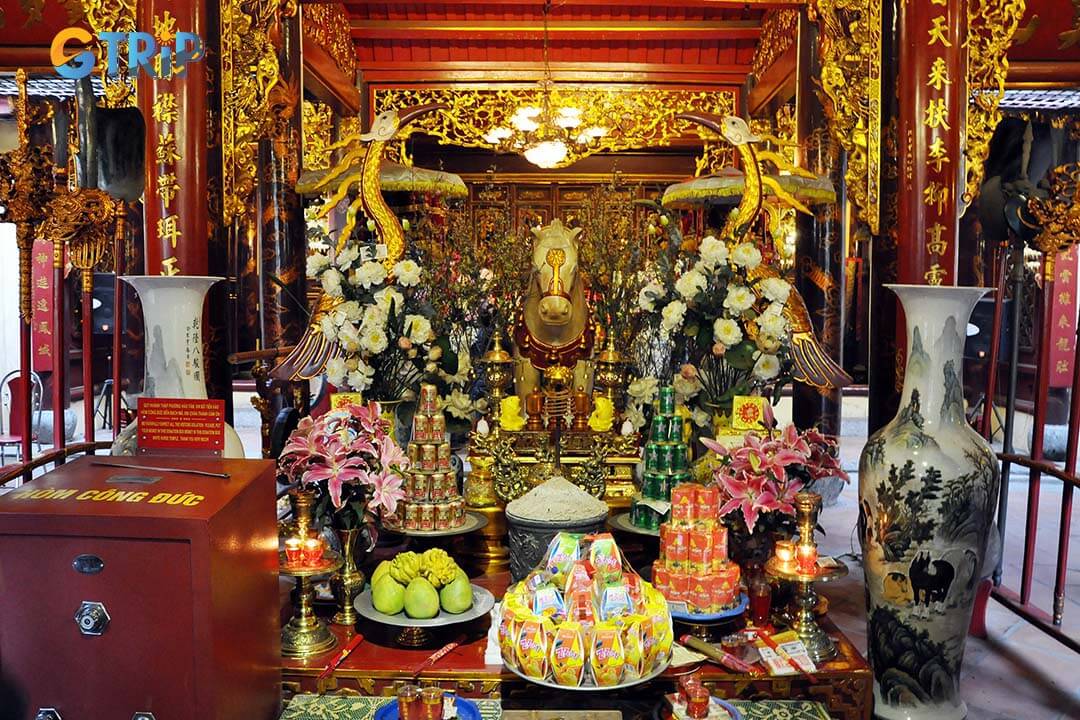
Bach Ma Temple is a small yet historically rich shrine in Hanoi’s Old Quarter, offering a quiet, authentic glimpse into the city’s spiritual heritage
How to get to Bach Ma Temple?
Located in Hanoi's Old Quarter, Bach Ma Temple is Vietnam’s oldest temple, attracting visitors year-round. This guide outlines transportation options based on your budget, time, and preferences.
- By car: A private car or hotel service (250,000-500,000 VND / $10-20) offers comfort, especially in hot or rainy weather. Ride-hailing apps like Grab are also available, but the Old Quarter’s narrow streets and limited parking (20,000-30,000 VND / $1-1.5) can be challenging.
- By motorbike: A popular and flexible choice for backpackers. Rentals cost 100,000-150,000 VND ($4-6) per day. Parking is easier than for cars, with nearby lots charging 5,000-10,000 VND ($0.20-0.40).
- By bus: The most budget-friendly option (7,000-9,000 VND / $0.30-0.40). Three routes stop at Tran Nhat Duat station, about a 6-7 minute walk (500 meters) from the temple:
- Bus 18: Connects Long Bien Bus Station to Giap Bat Bus Station
- Bus 32: Runs between Nhan Chinh and Gia Lam Bus Station
- Bus 34: Travels from Hoan Kiem Lake to Gia Lam Bus Station
Buses run daily from 5:00 AM to 9:00 PM, with 15-20 minute intervals during peak hours and 20-30 minutes off-peak. Download the “Timbus” or “Hanoi Bus” apps for real-time schedules.
Tip: If walking long distances or crossing busy streets is difficult, consider a taxi or Grab instead.
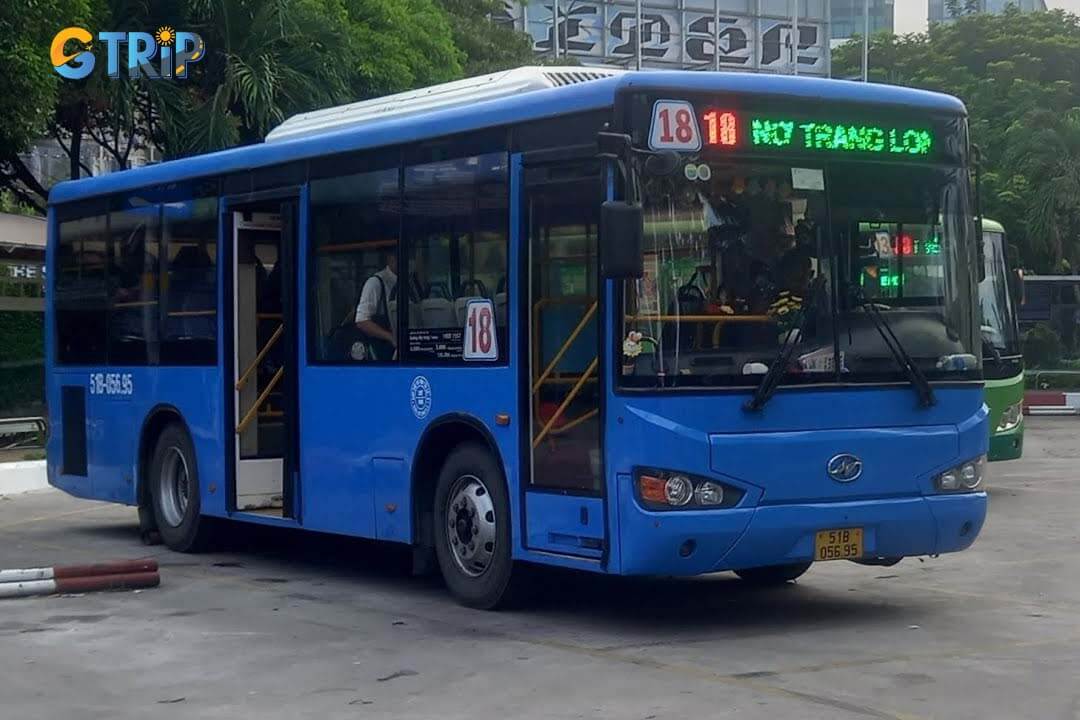
You can road to Bach Ma Temple by bus
A history of Bach Ma Temple in Hanoi
Bach Ma Temple holds a long history closely tied to the establishment and growth of Thang Long - Hanoi.
| Time Period | Historical Significance |
|---|---|
| 866 (Tang Dynasty) | Long Do Temple, predecessor of Bach Ma Temple, was built to worship Long Do, a local deity who protected Dai La Citadel against dark magic. Governor Cao Bien acknowledged his power, granting him the title Divine Guardian of the Capital Citadel. |
| 10th Century (Dinh Dynasty) | Emperor Dinh Tien Hoang prayed at the temple during his unification campaign. After victory, he dreamed of the White Horse Spirit reminding him of proper rites. He honored Long Do with a divine title and built another temple in his empress’s hometown. |
| 1010 (Ly Dynasty) | While relocating the capital to Thang Long, King Ly Thai To faced repeated failures building the citadel walls. A white horse spirit emerged from the temple, leaving tracks that marked a stable foundation. Following them, the citadel was successfully built. From then, Long Do in White Horse form was worshipped as Guardian Deity. |
| 17th–19th Centuries | The temple underwent major restorations, with expansions during the Le era and significant renovations under the Nguyen dynasty, including a Confucian shrine and a vaulted crab-shell roof. |
| Today | Recognized as one of the Four Sacred Temples of Thang Long, Bach Ma Temple preserves centuries of legends, architecture, and devotion in Hanoi’s Old Quarter. |
The architecture of Bach Ma Temple
Bach Ma Temple is a remarkable example of traditional Vietnamese religious architecture, blending centuries of cultural influence and masterful craftsmanship. Its design reflects classic northern Vietnamese style, carefully preserved through restorations.
The temple stands out in Hanoi’s Old Quarter with its striking yellow walls and red wooden doors adorned with golden dragons, symbols of imperial power and spiritual protection. The color scheme of yellow (earth and royalty) and red (prosperity) enhances its sacred atmosphere and imperial ties.
The temple’s wooden framework, supported by durable ironwood columns, exemplifies traditional carpentry. The roof follows the sophisticated “gia chieng chong ruong con nhi” style, a nail-free system of interlocking beams and decorative brackets. This structure ensures resilience through the centuries.
A key feature is the crab-shell-shaped vaulted roof, serving both function and symbolism. Its curved eaves and elevated ridges support ventilation, rain protection, and convey harmony between heaven and earth.
Inside, the Dai Bai (Main Hall) is richly adorned with carvings of dragons, phoenixes, and folk motifs. Gold leaf and lacquer add depth and symbolism, while calligraphy panels express moral and philosophical ideals.
At the spiritual center stands the White Horse statue, believed to have guided King Ly Thai To in choosing the citadel’s site. The statue is carved with traditional techniques, surrounded by ritual objects and an altar featuring lotus motifs, representing enlightenment. Each detail of Bach Ma Temple, from its architecture to its decoration, embodies Vietnam’s spiritual legacy and cultural artistry. It offers visitors a profound connection to the country’s heritage.
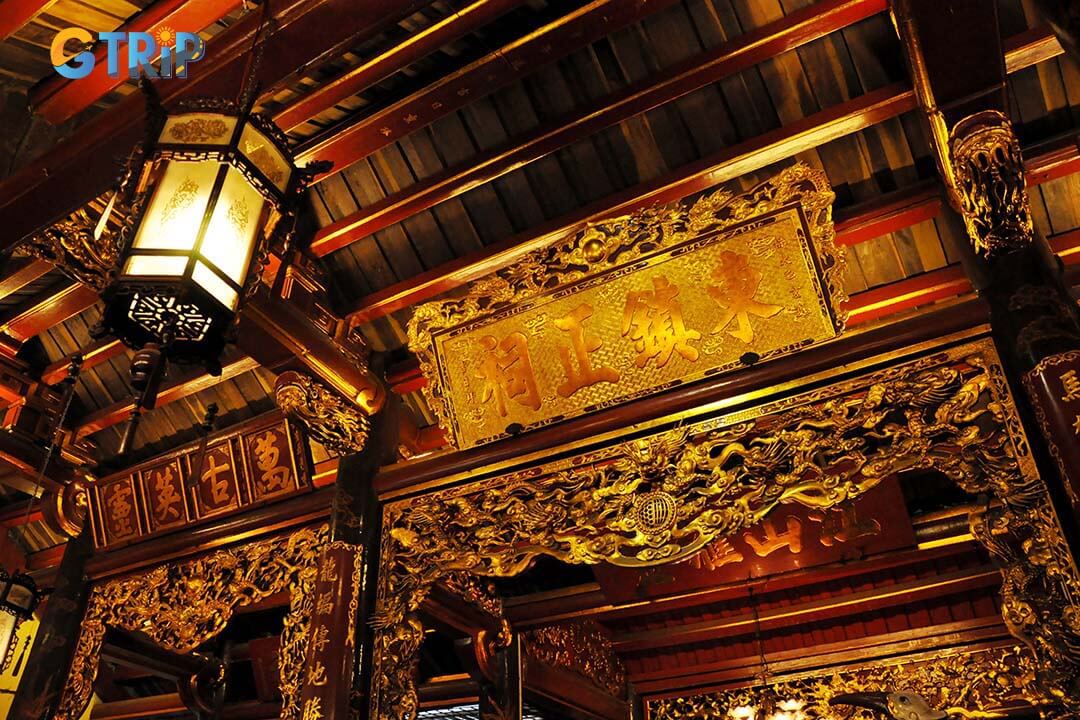
Bach Ma Temple features traditional northern Vietnamese architecture, with symbolic colors, intricate carvings, and a vaulted roof that reflects its rich cultural
Things to do at Bach Ma Temple
Bach Ma Temple isn't just a historical landmark, it's a living, breathing center of cultural and spiritual practices. You can immerse yourself in authentic Vietnamese religious traditions while appreciating the temple's aesthetic beauty and historical significance. Joining local rituals or admiring its intricate design, Bach Ma Temple offers a rich glimpse into Vietnamese spiritual life and culture.
Observe locals practising their beliefs and burning incense
At Bach Ma Temple, observing the daily rituals of local worshippers offers an authentic window into Vietnamese religious life. Early morning to late afternoon, Hanoi residents come to this sacred site to perform age-old practices, creating an atmosphere filled with quiet reverence and tradition.
Central to worship is the burning of incense, believed to carry prayers to deities and ancestors. You can respectfully watch as devotees light bundles of joss sticks, bow their heads in prayer, and place the incense into ornate bronze urns around the temple. The ritual typically involves choosing an odd number of sticks, lighting them, making silent wishes, and bowing three times in respect.
The most active times are in the early morning and late afternoon, especially on the 1st and 15th days of the lunar month, significant dates in Vietnamese folk belief. While observing, be mindful of your surroundings: keep a respectful distance and avoid flash photography. With polite curiosity, you may find that locals are open to sharing the meaning behind their traditions.
Try praying for luck at Bach Ma Temple
Participating in prayer rituals at Bach Ma Temple offers visitors an immersive cultural experience while respecting local traditions. As one of Hanoi's oldest temples to the White Horse deity, it is revered for offering protection, business success, and safe journeys.
Many Vietnamese believe that sincerity matters more than the perfect execution of rituals. Approach your prayer with genuine respect and openness rather than treating it as a tourist activity. Local temple attendants are often available to guide visitors through proper procedures if you politely request assistance.
Remember that Bach Ma Temple remains an active place of worship rather than simply a tourist attraction. Your participation, while welcome when done respectfully, should acknowledge the genuine spiritual significance this site holds for local devotees.
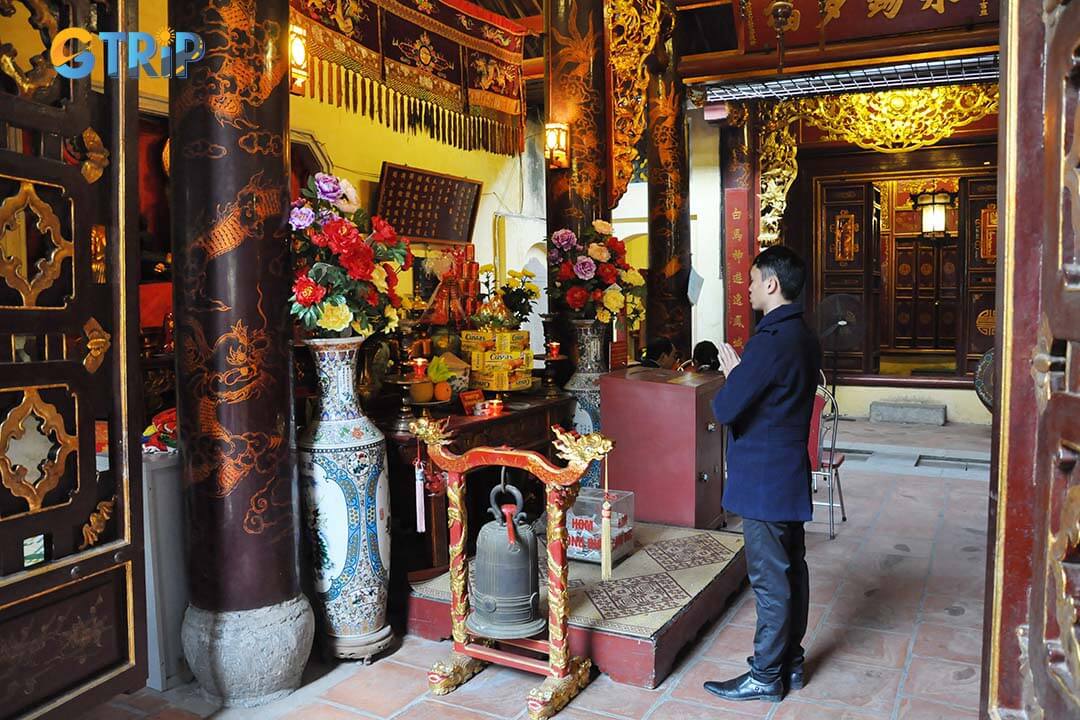
Joining prayer rituals at Bach Ma Temple offers a respectful way to engage with local spiritual traditions in one of Hanoi’s oldest and most revered sacred sites
Admire the beautifully decorated interior
Bach Ma Temple’s interior showcases traditional Vietnamese craftsmanship, uniting architectural and spiritual elements from various dynasties in a sacred space. The temple’s decorations reflect Vietnam’s cultural and religious heritage through centuries-old symbolism and artistry.
Upon entering the main hall, visitors are immediately struck by the rich red and gold color palette that dominates the space. The red and gold color scheme evokes luck and prosperity, creating a warm, reverent ambiance enhanced by soft natural light. Notable decorative features include:
- Woodcarvings: Elaborate relief carvings depicting scenes from folklore, mythological creatures, and floral motifs adorn pillars and beams
- Lacquerwork: Multiple layers of traditional lacquer in vibrant reds and blacks, often inlaid with mother-of-pearl details
- Calligraphy: Ornate Chinese and Nom script panels containing poems, blessings, and historical records
- Ceramic elements: Blue and white porcelain offerings and decorative pieces influenced by Chinese ceramic traditions
- Bronze ritual objects: Intricately designed incense burners, gongs, and ceremonial weapons
The centrepiece of the interior is the elaborately carved altar housing statues of deities. The main shrine features the White Horse deity alongside other folk gods associated with protection and prosperity. These statues, often gilded or painted in vibrant colors, are typically adorned with fresh offerings of fruit, flowers, and incense.
Photography is permitted in most areas of the temple interior, though visitors should avoid using flash as it can damage the ancient pigments and disturb worshippers. Top photo spots include the central altar with hanging incense coils, carved roof beams, and the ceremonial palanquin (when on display).
Take time to examine the smaller details often missed by casual visitors, such as the subtle variations in carving styles that reveal different historical renovation periods. Notice also the symbolic animals, dragons, phoenixes, turtles, and unicorns, along with geometric patterns that create visual harmony throughout the space.
Annual festivals and cultural events at Bach Ma Temple
Bach Ma Temple hosts various cultural and spiritual events throughout the year, offering visitors a unique opportunity to experience Hanoi's rich traditions. The most notable celebration is the Bach Ma Temple Festival, held on the 12th and 13th days of the second lunar month, typically in March. This two-day festival honors Long Do, the White Horse deity who is believed to have guided Emperor Ly Thai To in establishing Hanoi. The event features a procession, folk performances, incense offerings, and symbolic animal sacrifices.
In addition to the festival, Bach Ma Temple holds special ceremonies on the 1st and 15th of every lunar month. These dates are considered spiritually significant in Vietnamese tradition, when the connection between the physical and spiritual worlds is thought to be at its strongest. You can witness extended prayers, offerings, and traditional rituals, including monks chanting and devotees burning votive paper items.
Lunar New Year is another important time at the temple, when locals visit to worship their ancestors and pray for a prosperous year ahead. During the first days of Tet, the temple becomes a community hub, with incense filling the air as visitors seek blessings for health, wealth, and happiness in the new year. To attend, it’s best to check the lunar calendar and dress modestly out of respect for the ceremonies.
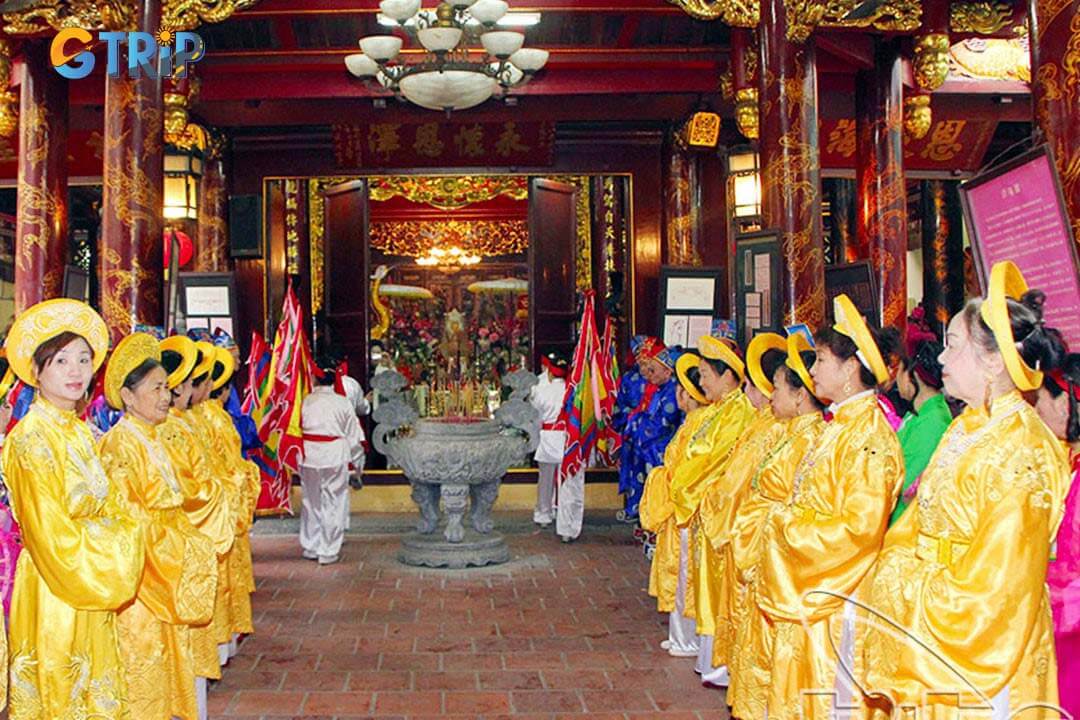
Bach Ma Temple comes alive during traditional festivals and lunar rituals, offering visitors an authentic glimpse into Hanoi’s vibrant spiritual and cultural life
Nearby attractions to visit from Bach Ma Temple
While Bach Ma Temple provides a spiritual sanctuary in Hanoi's bustling Old Quarter, the surrounding area offers numerous fascinating attractions worth exploring. Located in a prime position, the temple serves as an excellent starting point for discovering Hanoi's rich cultural tapestry. Here's a comprehensive guide to the most notable nearby sites that complement your visit to Bach Ma Temple.
Hanoi Old Quarter night market
Just a short walk from Bach Ma Temple, the Hanoi Old Quarter Night Market brings the area to life every Friday, Saturday, and Sunday evening from 6:00 PM until midnight. Stretching along Hang Dao Street, the market turns the Old Quarter into a lively, colorful hub of lights, music, and crowds. It’s a great spot to continue your evening after a daytime visit to the temple.
The market offers something for everyone, handmade crafts, traditional souvenirs, affordable fashion items, and delicious Vietnamese street food. Cultural performances, such as live music or traditional dance, often pop up along the route, adding to the festive mood. To enjoy the market fully, arrive early to avoid peak crowds and bring small bills for easier purchases. Bargaining is expected and part of the fun.
Hoan Kiem Lake
Hoan Kiem Lake, located just a 7-minute walk from Bach Ma Temple, is the heart of Hanoi both geographically and spiritually. Known as the "Lake of the Restored Sword", it holds deep historical and mythical significance. The serene lake offers a peaceful break from the hustle of the Old Quarter, with a 1.5-kilometer perimeter that's ideal for a stroll. Key attractions around the lake include Ngoc Son Temple, on a small island connected by the iconic red The Huc Bridge. Turtle Tower, standing in the lake’s center and symbolizing the golden turtle of legend, and the Le Thai To statue, honoring the founder of the Later Le Dynasty.
Early mornings are peaceful, with locals practising tai chi and meditation, while evenings bring a magical atmosphere with illuminated pathways and lively street performances. On weekends, the surrounding streets become pedestrian zones, offering a lively mix of food stalls, games, and cultural activities. After your visit to Bach Ma Temple, Hoan Kiem Lake provides a perfect spot to enjoy Hanoi’s unique blend of tradition and modern life.

Hoan Kiem Lake offers a tranquil escape steeped in legend, with scenic views, historic temples, and vibrant local life
Heritage House
The Heritage House at 87 Ma May Street offers a rare look into the lifestyle of wealthy 19th-century merchants in Hanoi’s Old Quarter. This beautifully restored tube house, built around 1890, features a narrow street-facing facade that extends deep into the property, a hallmark of traditional urban design. Inside, you’ll find three courtyards dividing business, living, and family spaces, along with antique furniture, ancestral altars, and original wooden architecture.
You can explore cultural artefacts such as musical instruments and household tools that bring daily life from the past to life. The house is open daily from 8:30 AM to 5:00 PM, with extended hours from 7:30 PM to 10:00 PM on weekends. Entry costs just 20,000 VND (around $0.86).
A visit here complements your experience at Bach Ma Temple by providing insight into the secular life of the same era. Photography is allowed in most areas, and a small gift shop offers traditional crafts and informative materials on Hanoi’s architecture.
Dong Xuan Market
About 800 meters north of Bach Ma Temple, Dong Xuan Market is Hanoi’s largest indoor market and a lively hub since 1889. Set in a four-story Soviet-style building, it’s packed with vendors selling everything from fresh produce to electronics, offering a vivid slice of daily Vietnamese life.
Each floor has a focus: fresh food and flowers on the ground level, packaged goods and spices on the first, clothing on the second, and budget-friendly local dishes on the third. Open daily from 6:00 AM to 7:00 PM, the market is busiest in the morning for food and in the afternoon for general shopping.
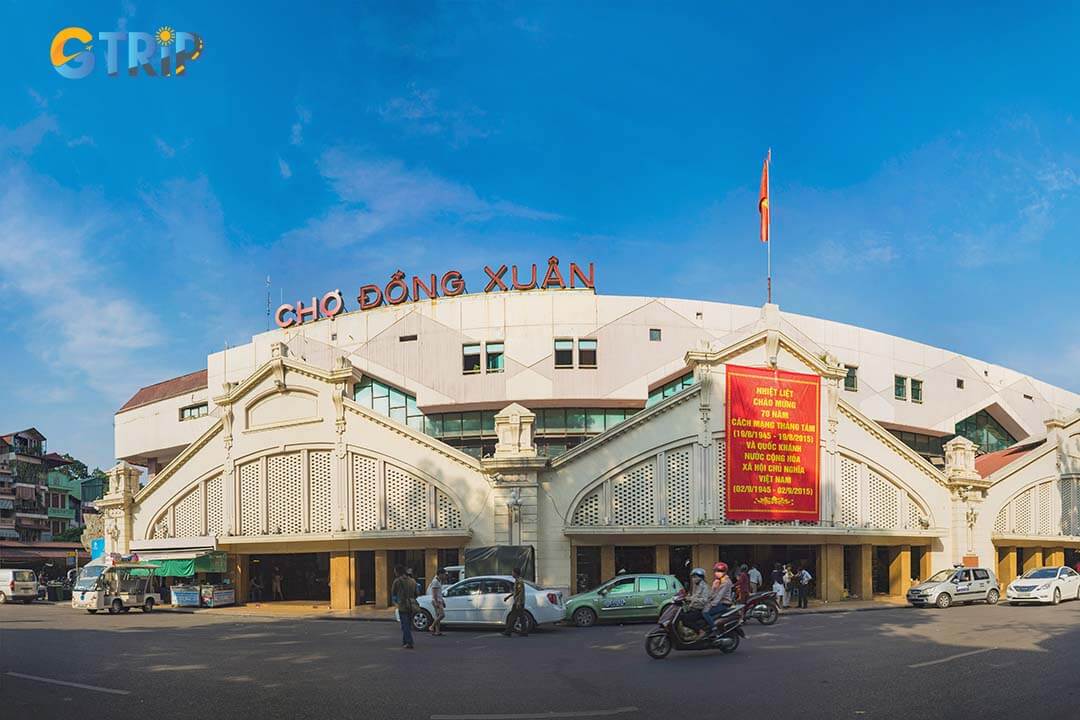
Dong Xuan Market is Hanoi’s largest indoor market, offering a vibrant, multi-level glimpse into everyday local commerce
Important tips when visiting Bach Ma Temple
Visiting Bach Ma Temple is a rewarding cultural experience, but it’s also a sacred space that calls for mindfulness. Here’s a quick guide to help you show respect and make the most of your visit.
- Dress modestly: Cover your shoulders and knees. Lightweight long pants and tops with sleeves work best. Bring a scarf if you're wearing a sleeveless shirt.
- Remove your shoes: Look for shoe racks before entering the main sanctuary. This is a sign of respect and standard temple etiquette.
- Keep your voice down: Speak softly and avoid loud conversations. This helps maintain the peaceful atmosphere and shows respect for worshippers.
- Avoid flash photography: Photos are generally allowed, but don’t use flash. Ask permission if you want to photograph people or temple caretakers.
- Go during prayer times: Early morning (6-7 AM) or evening (6-7 PM) is when locals gather for chanting and incense rituals, ideal for cultural immersion.
- Hire a guide (optional): A local guide (150,000-250,000 VND) can enrich your visit with historical context and symbolism. Tours usually last under an hour.
- Bring small change: Donation boxes are placed near altars. Offering 20,000-50,000 VND is customary and appreciated.
- Avoid weekends if possible: Weekdays, especially early mornings, offer a quieter, more authentic experience than crowded weekends.
By following these guidelines, you'll not only show respect for this important cultural site but also gain a deeper appreciation of its significance in Vietnamese religious traditions. Bach Ma Temple welcomes visitors of all backgrounds who approach the space with appropriate reverence and curiosity.

Follow these simple tips on attire and timing to enjoy a respectful and enriching cultural visit
See also: The three other attractions that, together with Bach Ma Temple, form the Four Sacred Temples of Thang Long in Hanoi
Bach Ma Temple is more than just an ancient shrine, it is a gateway into Hanoi’s deep-rooted history and cultural soul. Visitors can connect with centuries-old legends, witness sacred traditions, and find serenity within its halls. A visit here offers both meaningful reflection and an authentic cultural journey, making every moment at Bach Ma Temple a rewarding experience that enriches any exploration of Vietnam with GTrip - Vietnam Travel Agency as your trusted companion.

